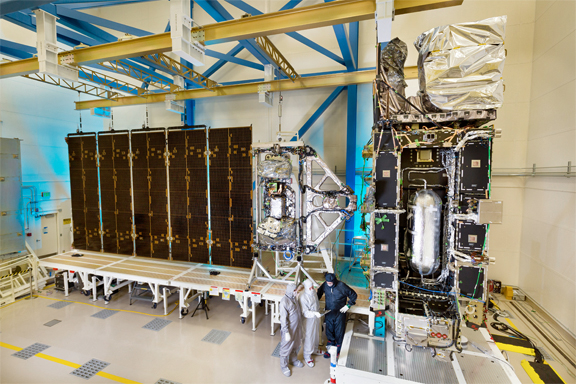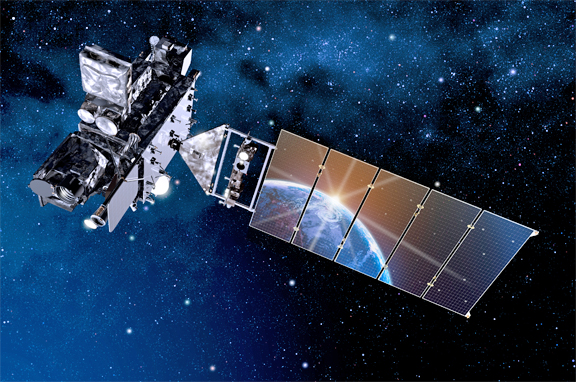[SatNews] Lockheed Martin (NYSE: LMT) has completed assembly of NOAA’s GOES-R weather satellite and is now beginning critical testing of the spacecraft.
The first of four next-generation geostationary weather satellites, GOES-R will provide a major improvement in quality, quantity and timeliness of weather data collected over the current Geostationary Operation Environmental Satellite (GOES) system that monitors weather over North America.
The GOES-R satellite is now undergoing environmental testing to simulate the conditions of launch and the extreme environment the satellite will experience in space. The first stop for the satellite and its six instruments is a 65 foot-tall thermal vacuum chamber at Lockheed Martin’s facility near Denver. Over the next two months, the satellite will be powered-on, tested in a vacuum and exposed to extreme cold and heat. The satellite will also undergo a variety of additional tests including reverberant acoustic, separation and deployment shock, vibration, and electromagnetic interference and compatibility testing.
GOES-R is scheduled to launch in March of 2016 on an Atlas V from Cape Canaveral Air Force Station, Florida.
GOES-R will provide higher-resolution images of weather patterns and severe storms five times faster than today, which will contribute to more accurate and reliable weather forecasts and severe weather outlooks. GOES-R’s data will support short-term weather forecasts and severe storm watches and warnings, maritime forecasts, seasonal predictions, drought outlooks and space weather predictions. Additionally, GOES-R products will improve hurricane tracking and intensity forecasts, and increase thunderstorm and tornado warning lead time.
In addition to the four GOES-R Series satellites, Lockheed Martin also designed and built the Solar Ultraviolet Imager (SUVI) and the Geostationary Lightning Mapper (GLM) instruments that will fly aboard each spacecraft.
The NOAA Satellite and Information Service funds, manages, and will operate the GOES-R Series satellites. NASA oversees the acquisition and development of the GOES-R spacecraft and instruments for NOAA. The program is co-located at NASA’s Goddard Space Flight Center in Greenbelt, Maryland.
Executive Comment
“NOAA’s GOES satellites are our nation’s weather sentinels and are vital to our severe storm prediction and warnings,” said Tim Gasparrini, vice president and GOES-R Series program manager at Lockheed Martin Space Systems Company. “Now that the first GOES-R Series satellite is complete and environmental testing is underway, we’re one step closer to providing a necessary upgraded capability to NOAA and our nation.”




